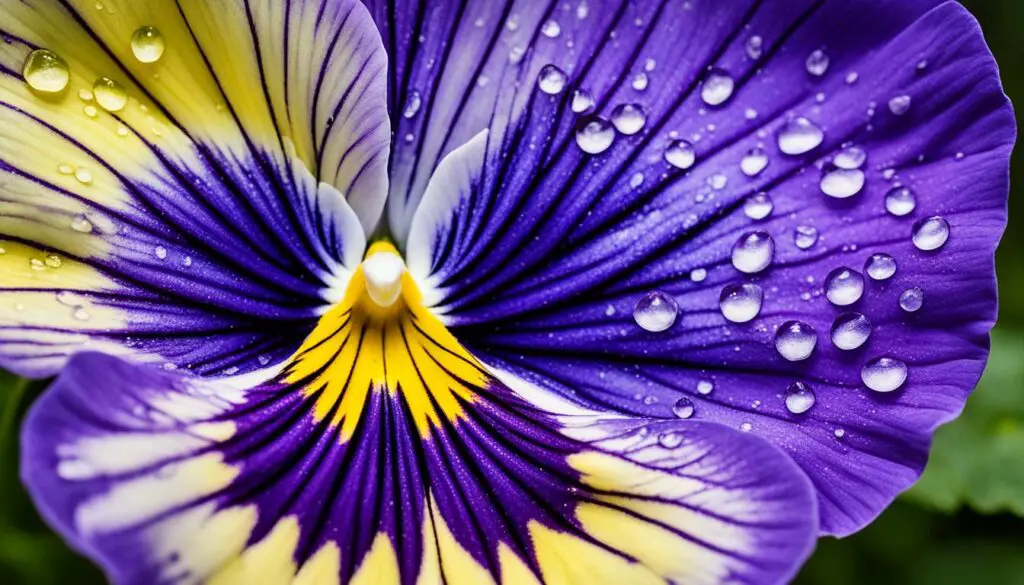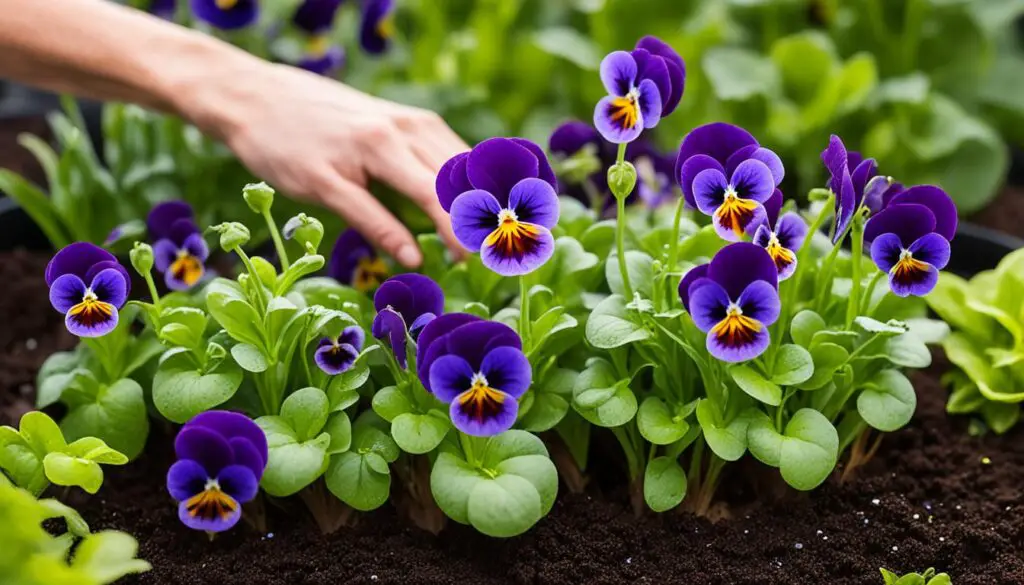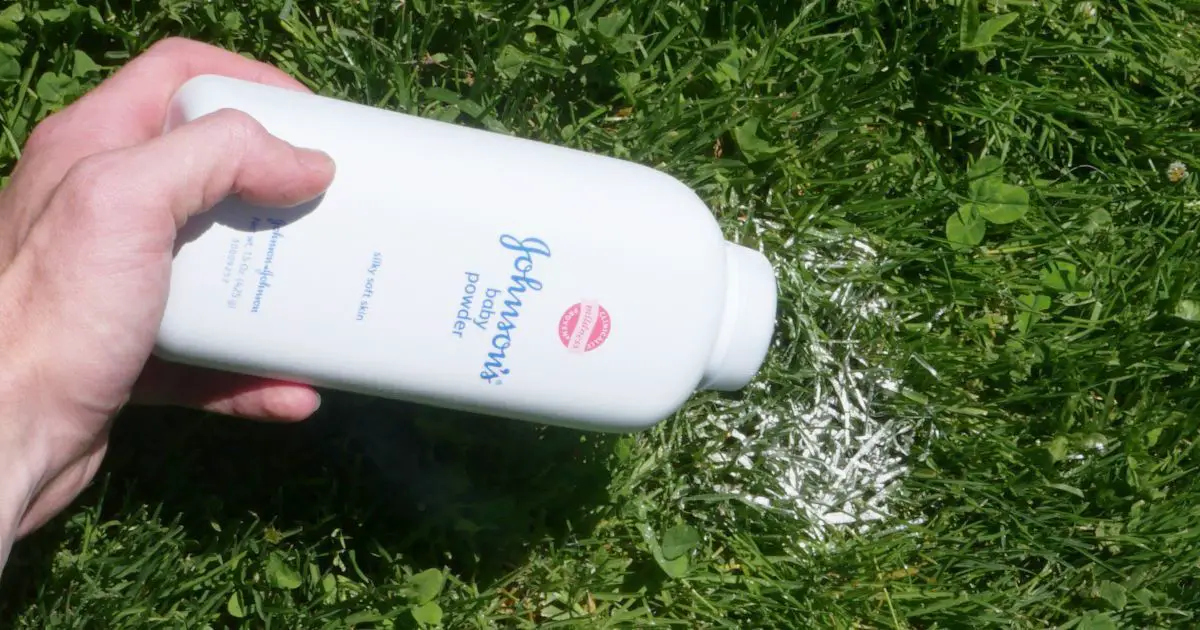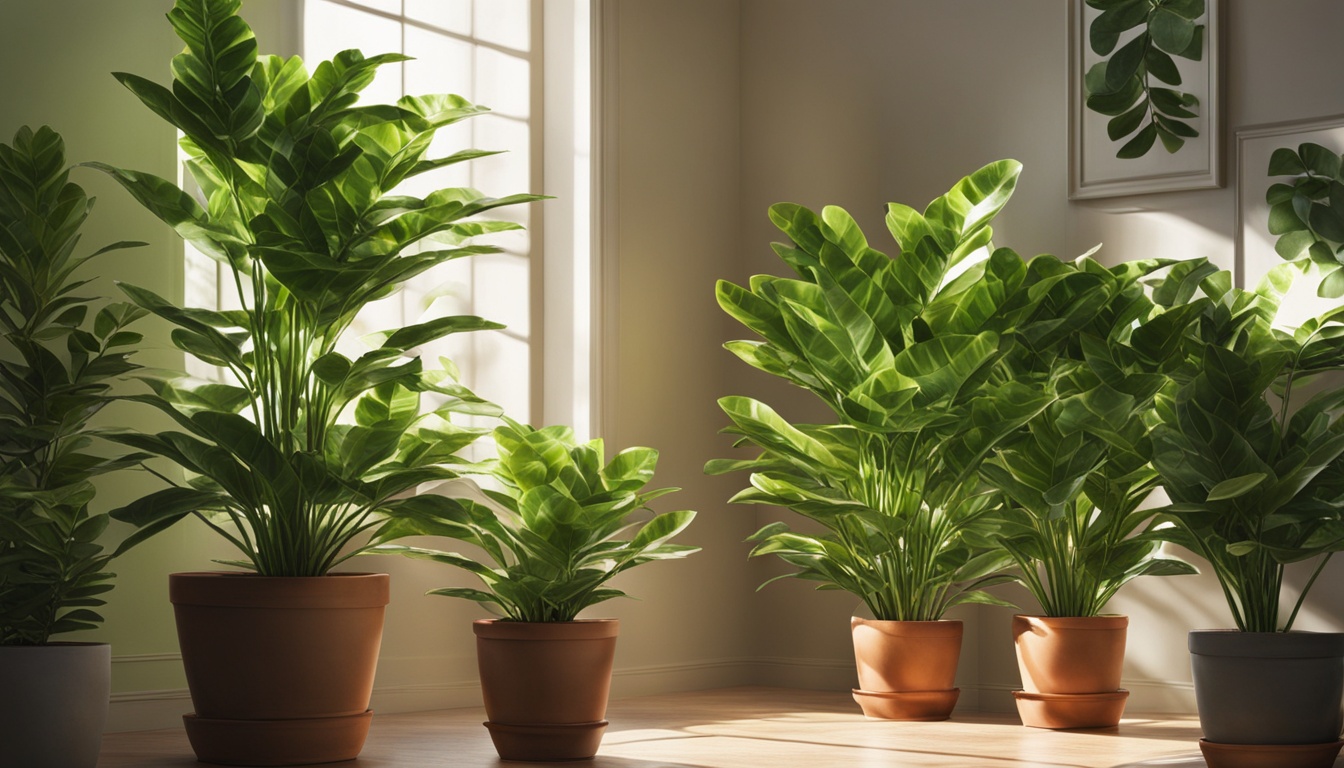Pansies (Viola x wittrockiana) are vibrant, fast-growing flowers perfect for early and late seasons. They belong to the violet family, Violaceae.
These flowers have heart-shaped petals in bright colors or bi-colors, often with a face-like center.
Pansies are hardy annuals, even though they are technically tender perennials grown every year.
They can handle cold but not heat, doing best in 40 to 60 degrees Fahrenheit. You can find pansies in white, yellow, purple, blue, red, pink, and orange, offering many color options.

Key Takeaways
- Pansies are versatile flowers suitable for containers, borders, and ground cover
- They are hardy in USDA zones 7-11 and can tolerate cold temperatures but struggle in hot, humid conditions
- Pansies bloom in a variety of vibrant colors, offering a diverse seasonal palette
- Proper planting and care, including well-drained soil and regular watering, are crucial for healthy pansy growth
- Pansies thrive best in cooler temperatures between 40-60°F and benefit from partial shade
About Pansies
Pansies (Viola x wittrockiana) are loved for their bright, cheerful flowers and easy growth. They come in many Pansy Colors and Pansy Varieties. This makes them great for gardens, containers, and borders.
Types and Colors
Some common Pansy Types include:
- Bolero Series: Large, ruffled, semi-double flowers that thrive in both spring and fall
- Bingo Series: Large-flowered blooms in 14 colors from pale blue to burgundy, flowering earlier than the Majestic Giants
- Cool Wave Series: Fast-growing, vigorous plants with a spreading habit, perfect for containers and hanging baskets
- Freefall Series: Day-neutral, trailing plants
- Joker Series: Pronounced face-like markings and bicolored flowers in complementary Pansy Colors
- Princess Series: Compact growth habits and dainty monochromatic flowers ranging from cream to deep purple with yellow centers
Pansies have a wide range of Pansy Colors. They go from soft pastels to deep, bold colors. This makes them perfect for any garden or landscape design.
| Pansy Color | Description |
|---|---|
| White | Crisp, clean white blooms |
| Yellow | Sunny, cheerful yellow shades |
| Purple | Vibrant, deep purple hues |
| Burgundy | Rich, velvety burgundy tones |
| Bicolor | Blooms with two contrasting colors |
Pansies have many Pansy Types and Pansy Colors. They add beauty and variety to any garden or landscape.
Grow A Pansy And Care
Growing and caring for pansies is rewarding. It brings vibrant colors and long-lasting blooms to your garden. You can plant them in beds, borders, or containers. To ensure they thrive, consider a few key factors.
Pansy Growing Conditions: Pansies like partial shade and rich, well-drained soil. They do best in a spot that gets morning sun but avoids the late afternoon heat. Plant them 7 to 12 inches apart to let them spread and grow.
Pansy Watering Guide: Pansies need consistent moisture but not soggy soil. Water them often, especially when it’s hot and dry. Keep the soil evenly moist but not waterlogged.
Pansy Fertilizing Tips: Pansies do well with monthly foliar feeding using a balanced fertilizer. This keeps their colors vibrant and helps them bloom all season.
Pansy Pest Control: Pansies can face pests like deer, slugs, aphids, and diseases. Keep an eye on your plants and act quickly to keep them healthy.
With the right Pansy Growing Conditions, consistent Pansy Watering, timely Pansy Fertilizing, and good Pansy Pest Control, your pansies can bloom for months. This depends on your area’s temperature and growing conditions.

“Pansies are like living jewels, adorning the garden with their vibrant and captivating blooms.”
Planting and Growing Conditions
When to Plant Pansies
The best time to plant pansies is early spring or fall. Soil should be between 45°F and 65°F. These flowers are hardy biennials but often grown as annuals. They do well in cooler weather.
Planting them in these seasons helps them grow strong roots and bloom brightly.
Soil and Sunlight Requirements
Pansies love rich, well-drained soil with organic matter like compost or peat moss. They prefer partial shade, especially in the afternoon. They can’t handle extreme heat or high humidity.
To make the best soil, mix 3 inches of premium potting or garden soil into the area. This soil is full of nutrients that pansies need. Plant them 7 to 12 inches apart, so they can spread out and grow to about 6 to 9 inches tall.

“Pansies start to grow best when soil temperatures are between 45°F and 65°F (7°C and 18°C).”
Caring for Pansies
To keep your pansies healthy, regular care is key. Make sure to water them often to keep the soil moist but avoid overwatering. Use a slow-release fertilizer once a month to help them bloom more without too much leaf growth.
It’s important to remove dead pansy flowers to keep them blooming longer. Watch out for pests like deer, slugs, aphids, and diseases like gray mold and powdery mildew. Use repellents, insecticidal soap, and fungicides as needed to keep them away.
With proper care, pansies can bloom for many months, depending on your area’s climate. Keep the soil moist, fertilize regularly, and remove dead flowers to enjoy their bright colors all season.
FAQ
What are pansies?
Pansies (Viola x wittrockiana) are vibrant, fast-growing flowers perfect for early and late seasons. They belong to the violet family, Violaceae. Their flowers have heart-shaped petals in bright colors or bi-colors, often with a face-like center.
What are the common pansy varieties?
Common pansy varieties include the Bolero Series, Bingo Series, Cool Wave Series, Freefall Series, Joker Series, and Princess Series. Each variety has its own unique traits, like ruffled flowers and large blooms.
What are the growing conditions for pansies?
Pansies love partial shade and rich, well-drained soil. They do best in spots that get morning sun but avoid the late afternoon heat. Plant them 7 to 12 inches apart, as they spread about 9 to 12 inches and grow 6 to 9 inches tall.
When is the best time to plant pansies?
Plant pansies in early spring or fall when soil temperatures are between 45°F and 65°F. They prefer partial shade and full, direct morning sun. Make sure they’re protected from intense afternoon rays.
How do I care for my pansy plants?
Keep your pansies watered to prevent soil drying out but avoid overwatering. Feed them a balanced, slow-release fertilizer monthly for lots of blooms. Remove dead flowers to keep them blooming longer.
What are common pests and diseases for pansies?
Pansies face threats from deer, slugs, aphids, gray mold, root and crown rot, powdery mildew, anthracnose, and leaf spots. Use repellents, insecticidal soap, and fungicides to manage these pests and diseases.



